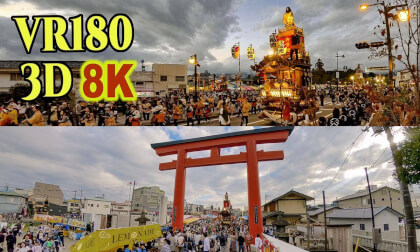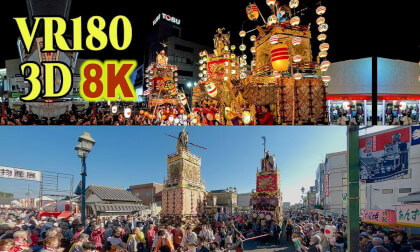This is VR content
Download
DeoVR app
to watch in VR

BazTravels
Released: 1 year ago
Passthrough
Get the action happening right at your place with DeoVR passthrough. Open a video in DeoVR app and click
Passthrough values:
- Hue: 0
- Saturation: 0
- Brightness: 0
- Color range: 0
- Falloff: 1000
Recommended headsets:
Meta Quest 3, and Quest Pro with stereoscopic color passthrough, Pico 4 (monoscopic color passthrough).
Compatible headsets:
Quest 2, Valve Index (monoscopic black and white passthrough).
Passthrough is not compatible yet for Oculus Link cable.
Check out our complete guide to passthrough and join in the discussion at our busy forum.
Shot on:
Canon R5
Welcome to BazTravels and I hope you enjoy my VR180 videos
YouTube: https://www.youtube.com/c/BazTravels
Modest place of worship set against a backdrop of green hills & dating back several centuries.
Philopappos died in 116, and his death caused great grief to his sister Julia Balbilla, citizens of Athens and possibly to the imperial family. As a dedication to honor the memory of Philopappos, Balbilla with the citizens of Athens erected a tomb structure on Muses Hill (Λόφος Μουσών) near the Acropolis of Athens. His marble tomb monument is still known as the Philopappos (or Philopappou) Monument, and the hill is today known as Philopappou Hill (Λόφος Φιλοπάππου).
The Greek geographer Pausanias describes Philopappos’ grand tomb as a monument built for a Syrian man. The monument was built on the same site where Mousaios or Musaeus, a 6th-century BC priestly poet and mystical seer, was held to have been buried. The location of this tomb, opposite the Acropolis and within formal boundaries of the city, shows the high position Philopappos had within Athenian society.
YouTube: https://www.youtube.com/c/BazTravels
Modest place of worship set against a backdrop of green hills & dating back several centuries.
Philopappos died in 116, and his death caused great grief to his sister Julia Balbilla, citizens of Athens and possibly to the imperial family. As a dedication to honor the memory of Philopappos, Balbilla with the citizens of Athens erected a tomb structure on Muses Hill (Λόφος Μουσών) near the Acropolis of Athens. His marble tomb monument is still known as the Philopappos (or Philopappou) Monument, and the hill is today known as Philopappou Hill (Λόφος Φιλοπάππου).
The Greek geographer Pausanias describes Philopappos’ grand tomb as a monument built for a Syrian man. The monument was built on the same site where Mousaios or Musaeus, a 6th-century BC priestly poet and mystical seer, was held to have been buried. The location of this tomb, opposite the Acropolis and within formal boundaries of the city, shows the high position Philopappos had within Athenian society.































